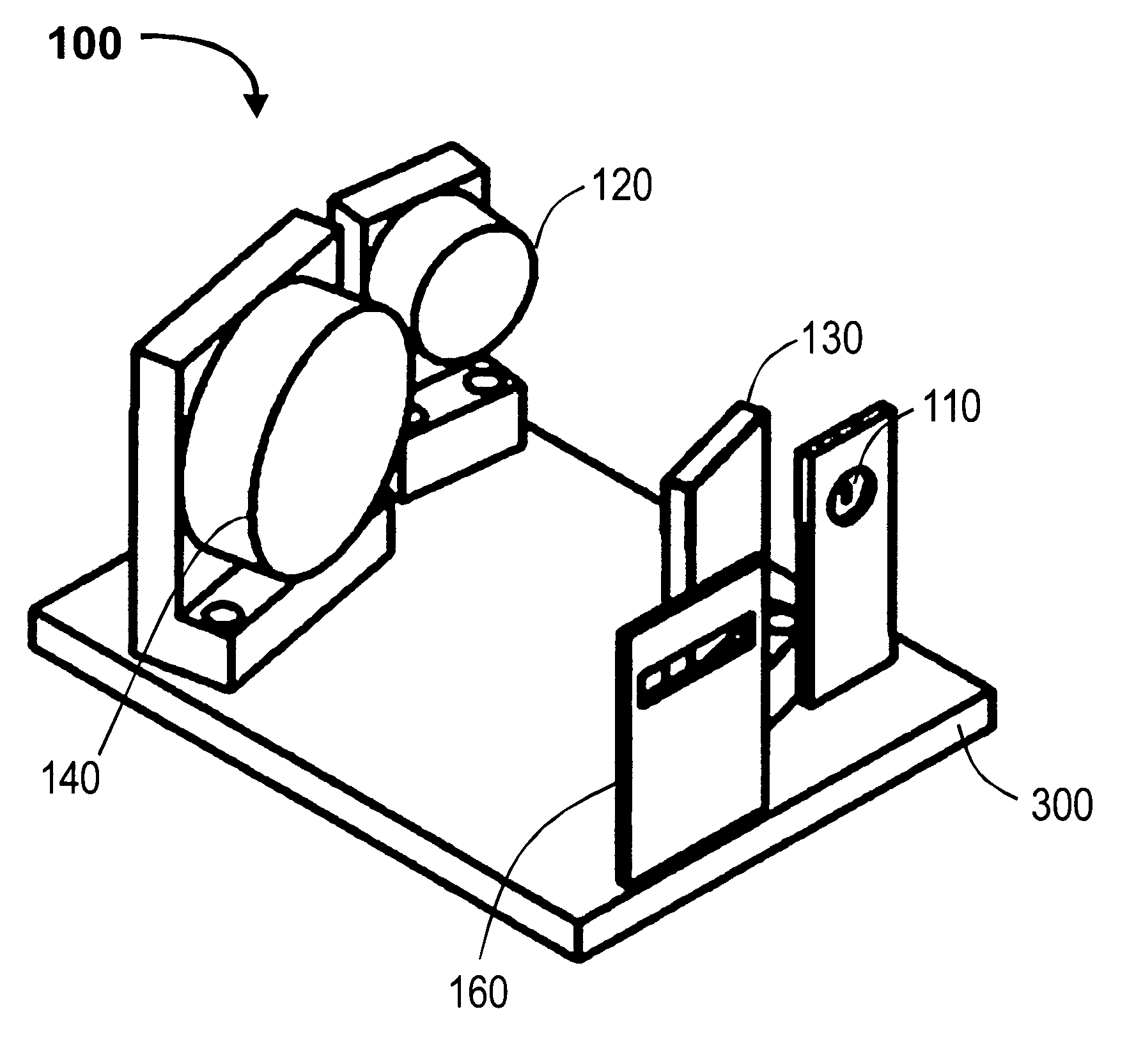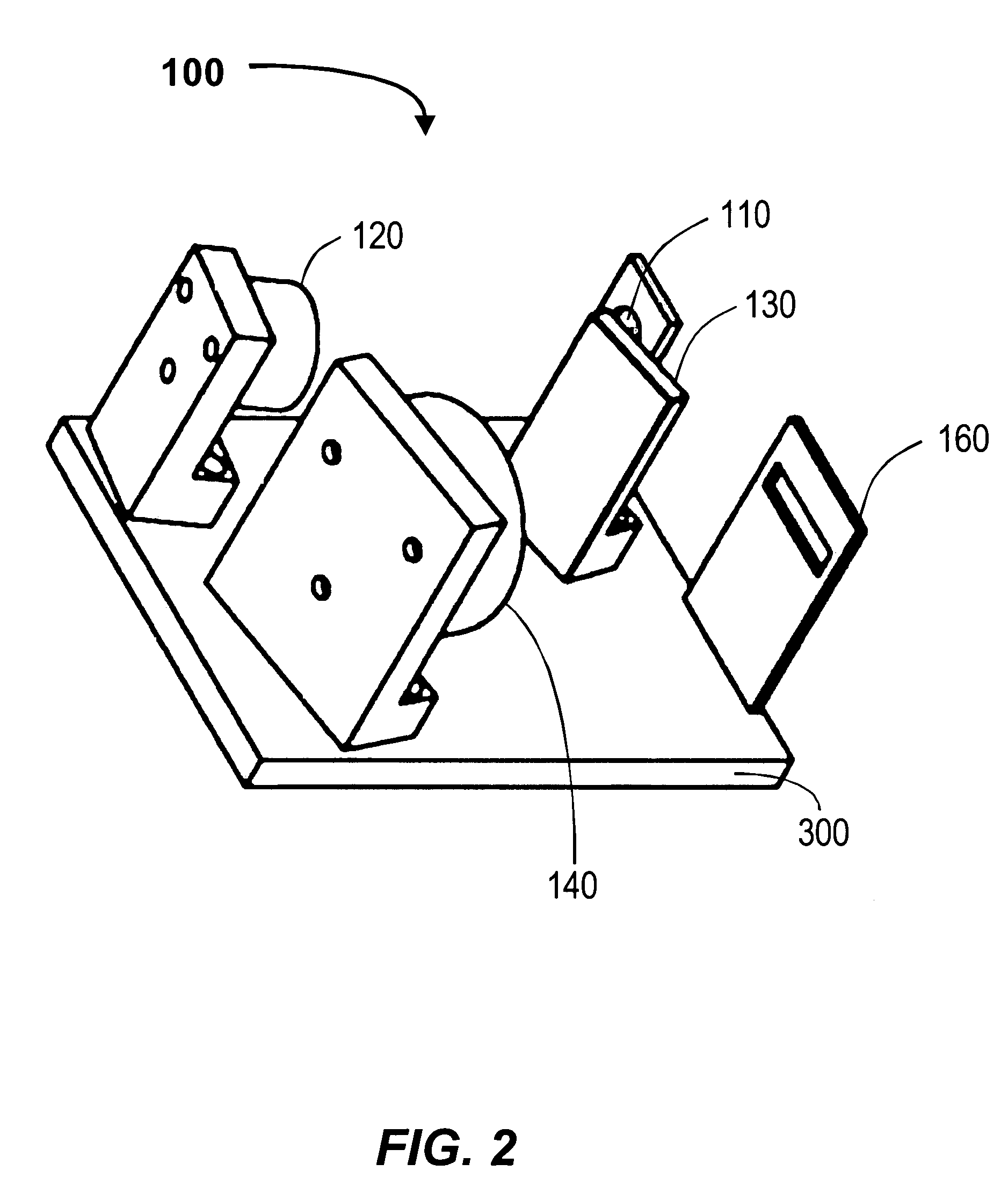Compact infrared spectrometer, and methods and systems for manufacture and assembly of components used in same
a technology of infrared spectrometer and compact body, which is applied in the field of infrared spectrometer, can solve the problems of inability to obtain useable spectra from such an infrared spectrometer, low environmental resistance to environmental changes, and inability to meet ruggedness requirements for field applications
- Summary
- Abstract
- Description
- Claims
- Application Information
AI Technical Summary
Benefits of technology
Problems solved by technology
Method used
Image
Examples
Embodiment Construction
[0033]FIGS. 1 and 2 illustrate different views of an infrared spectrometer 100 in accordance with the present invention. Spectrometer 100 is compact (e.g., less than 192 cubic inches in volume as described below), and operable in a wavelength range of 4.5 or more microns. In one embodiment, spectrometer 100 operates in the 7.5 to 13.5 micron range and, in a yet more specific embodiment, spectrometer 100 operates in 4.5 or more microns of the 7.5 to 13.5 micron range. In other embodiments, spectrometer 100 operates in 4.5 or more microns of the 3.0 to 14.5 micron range.
[0034]Spectrometer 100 includes an entrance slit 110, a collimating mirror 120, a grating 130 and a focusing mirror140. As shown in FIG. 3, at least some radiation passing through slit 110 follows an optical path in which at least some radiation passing through slit 110 is reflected by the collimating mirror 120 onto the grating 130, which in turn reflects at least some radiation onto the focusing mirror 140, which in ...
PUM
| Property | Measurement | Unit |
|---|---|---|
| volume | aaaaa | aaaaa |
| wavelength range | aaaaa | aaaaa |
| volume | aaaaa | aaaaa |
Abstract
Description
Claims
Application Information
 Login to View More
Login to View More - R&D
- Intellectual Property
- Life Sciences
- Materials
- Tech Scout
- Unparalleled Data Quality
- Higher Quality Content
- 60% Fewer Hallucinations
Browse by: Latest US Patents, China's latest patents, Technical Efficacy Thesaurus, Application Domain, Technology Topic, Popular Technical Reports.
© 2025 PatSnap. All rights reserved.Legal|Privacy policy|Modern Slavery Act Transparency Statement|Sitemap|About US| Contact US: help@patsnap.com



